Using the latest GIS and AI technology, AHA’s independent assessment of deforestation risk is based on the USDA National Agricultural Statistics Service (NASS) Cropland Data Layer (CDL). The CDL is an annual geo-referenced, crop-specific land cover data layer produced using satellite imagery and extensive agricultural ground reference data. Annual review of the CDL data, which has a spatial resolution of 30 meters, allows the rate and immediate drivers of deforestation (in terms of the crops or other land uses that replace forests) to be readily identified.
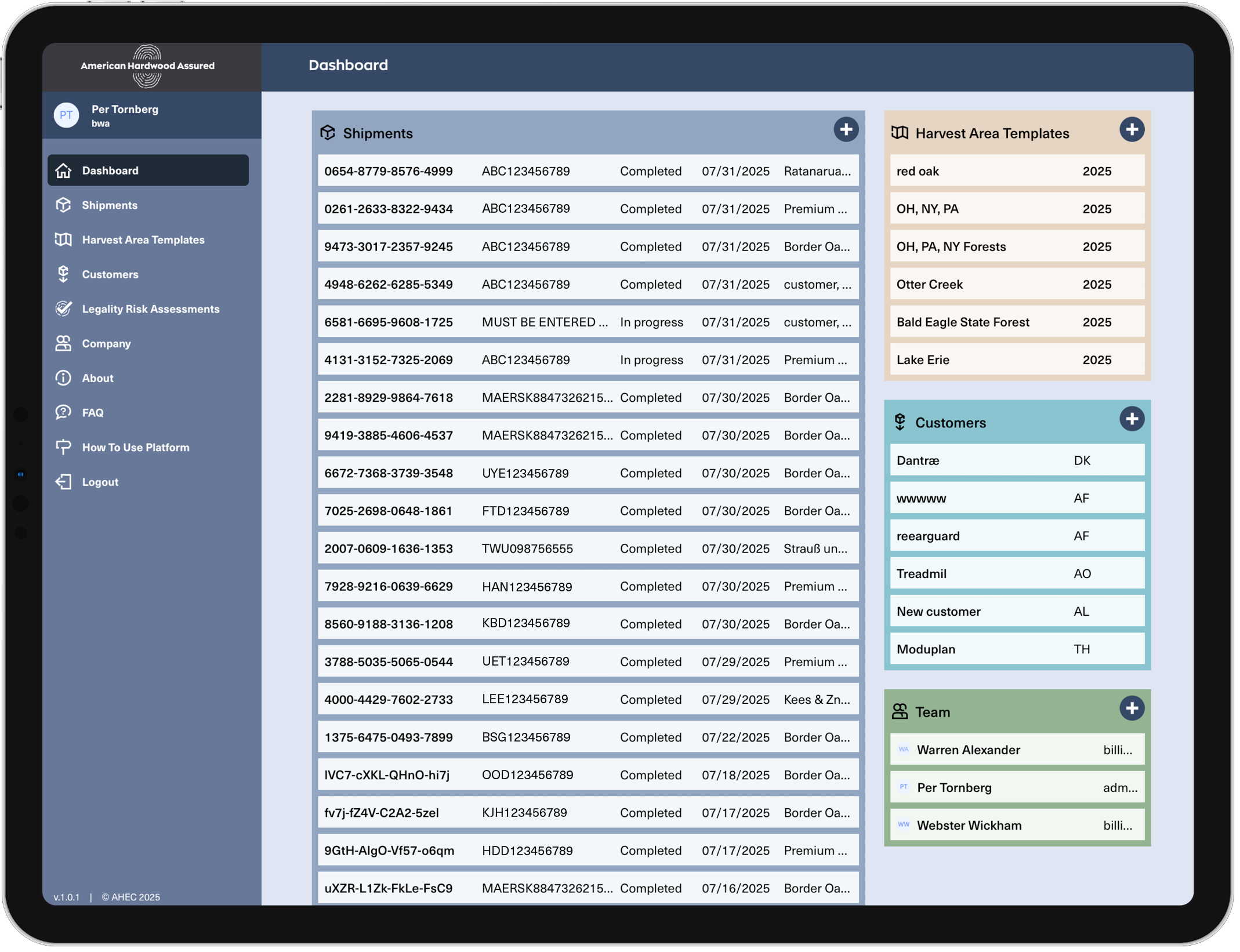
Users can quickly link this data with their own contact details, details of the customer receiving the consignment, the quantity of U.S. hardwoods contained in the consignment, and details of the product including harmonised system code and description, trade name and full scientific species name.
The platform is designed so that information replicated for numerous export consignments need only be entered once and information on harvest areas need only be updated once a year.
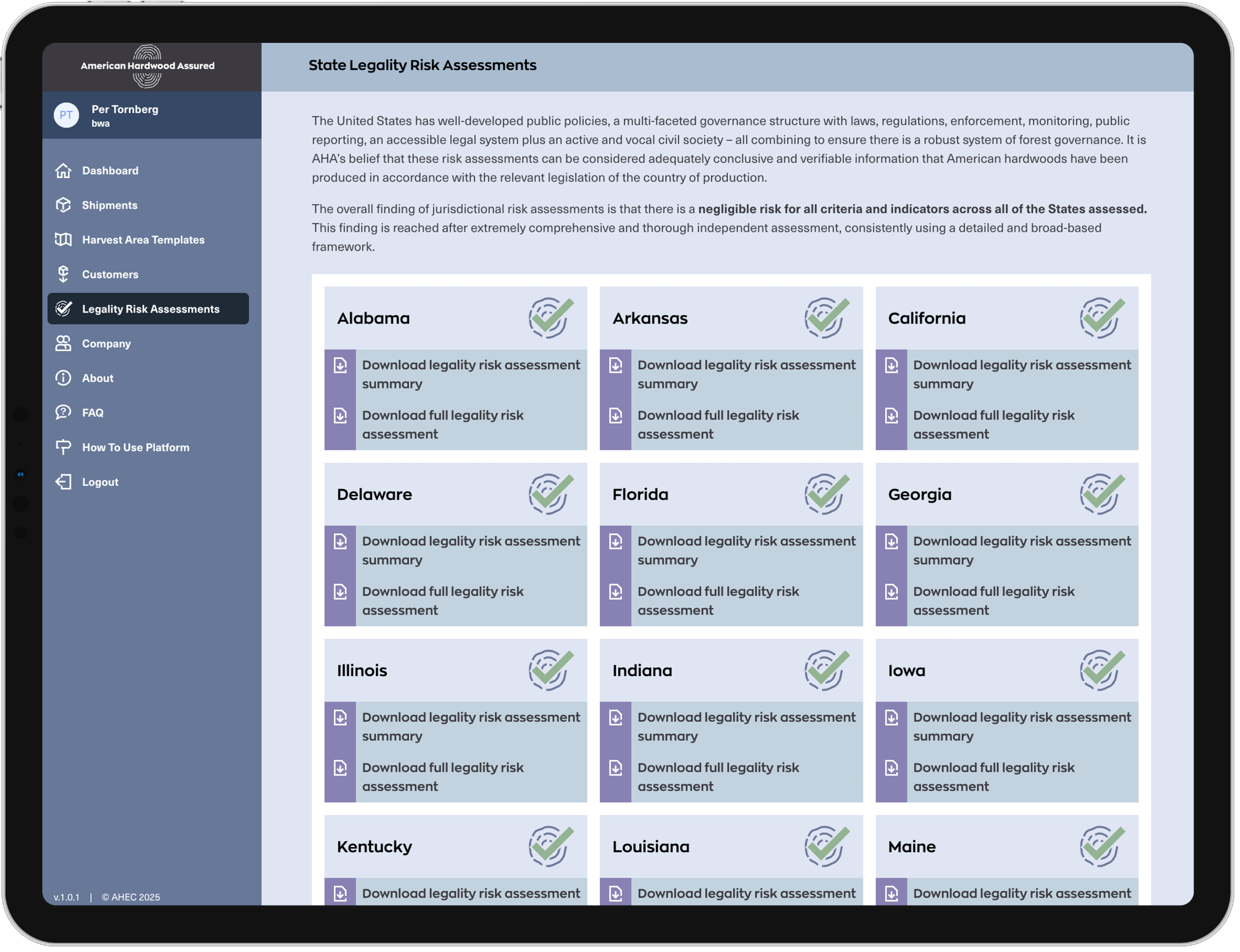
Independent analysis of all of the U.S. hardwood producing States indicates that American hardwoods sourced within the assessed states are produced and exported under conditions that should be considered as negligible risk of unlawful or illegal practices being involved in their production. The platform gives free access to the full and summarised assessments.
The overall finding of the jurisdictional legality risk assessments was that there is a negligible risk for all criteria and indicators across all of the States assessed. This finding was reached after extremely comprehensive and thorough independent assessment consistently using a detailed and broad-based framework. Legal compliance within the U.S. hardwood sector is the norm and non-compliance is both rare and non-systematic.
Considering the deforestation risk from across the states producing hardwoods, the risk (in effect, chance) of wood being from deforested land is extremely low. AHA estimates that less than one log in 10,000 entering hardwood supply chains would have originated from land potentially converted to agriculture in 2024.
Where U.S. hardwoods in specific consignments are sourced from counties where there are specified legality or deforestation risks, the user can provide details of risk mitigation action which will also appear on the AHA Statement.
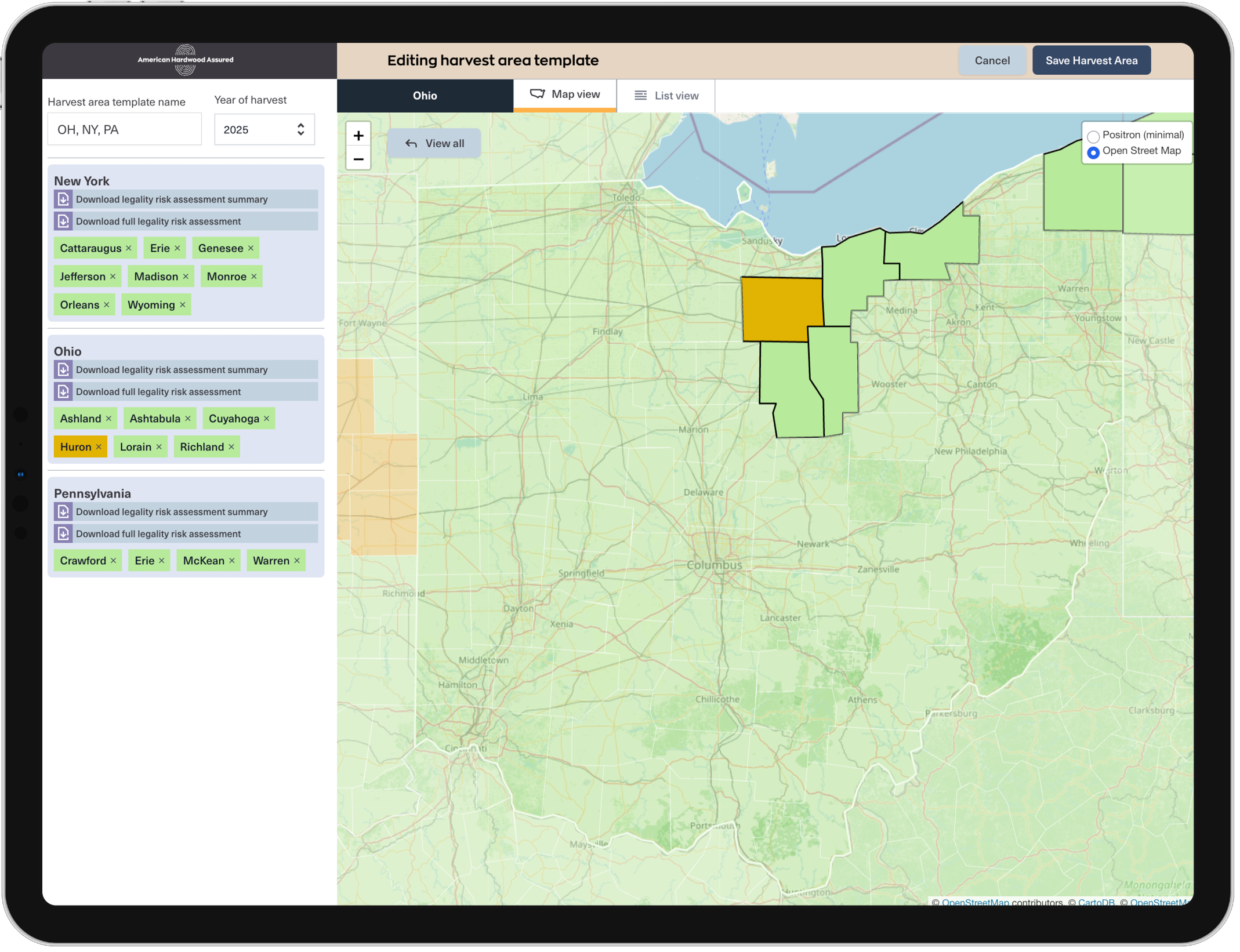
The platform can readily cope with consignments containing a mix of hardwood species sourced from different areas.
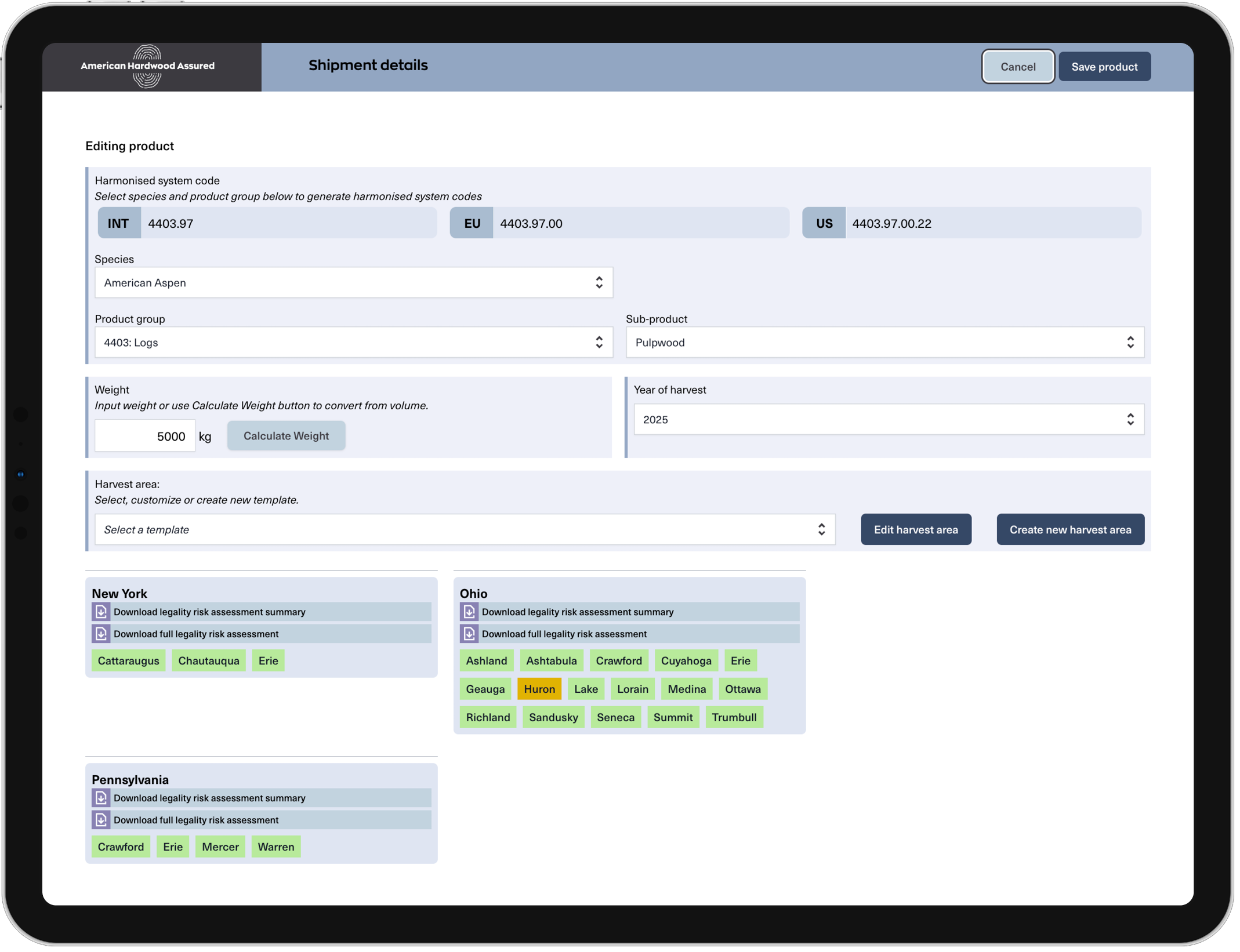
Working at a scale that is appropriate, the system allows supply areas across multiple counties to be rapidly identified and selected.
The platform provides access to comprehensive deforestation risk data at county level and legality risk data at state level prepared by independent experts commissioned by AHA. Users are provided with a point-and-click tool to select the specific U.S. counties where the hardwoods contained in their export consignments were harvested.

Each AHA Statement can be downloaded as a pdf and sent with other shipping documentation to customers. It can also be linked to using a unique QR code.
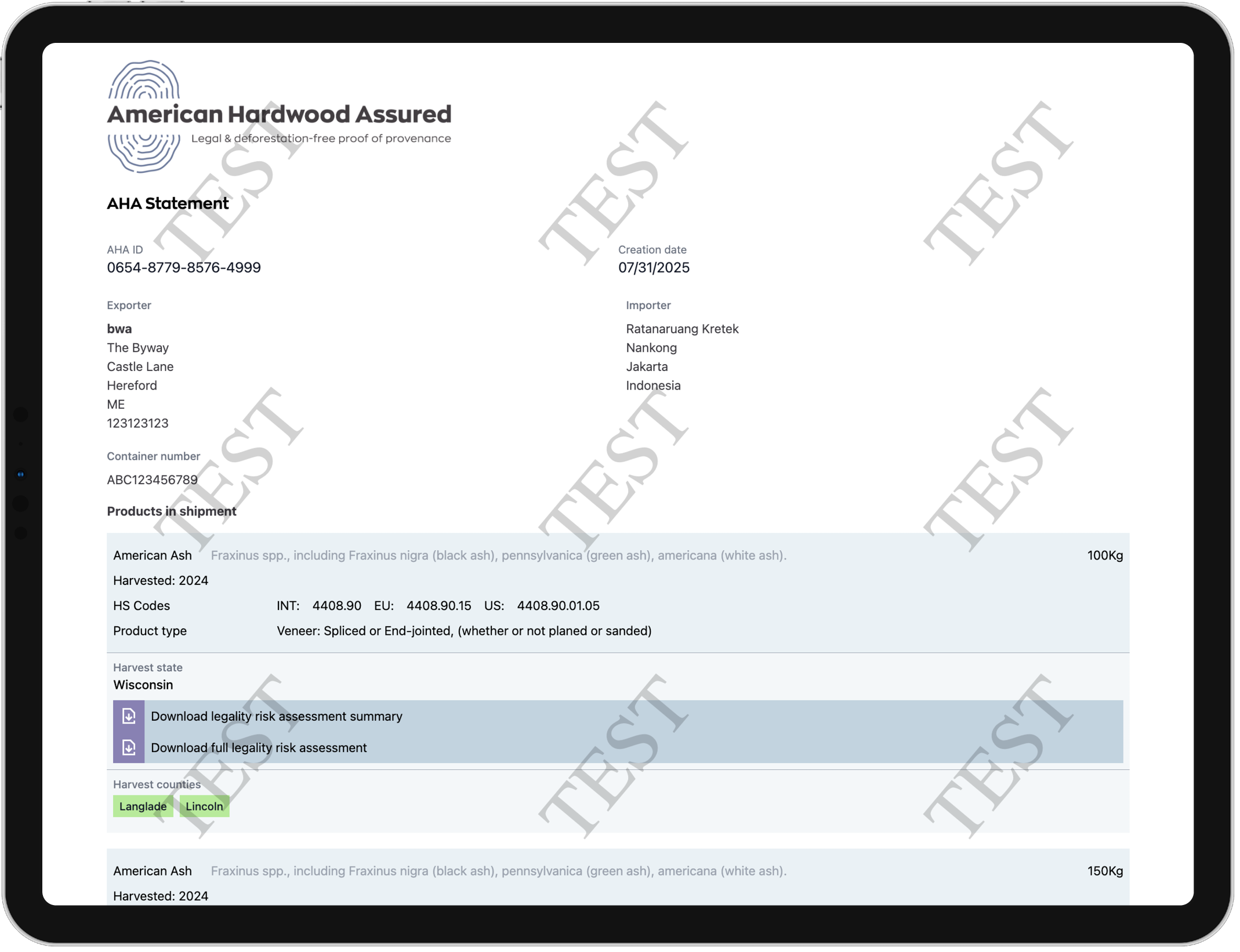
A separate geojson file is generated containing geolocation data formatted according to internationally recognised standards (as required by EUDR for example).
The platform, which is owned and operated by the American Hardwood Export Council, is now being made available free of charge to U.S. based businesses engaged in the U.S. hardwood export supply chain. Businesses wishing to access the platform must have an EIN federal tax ID and declare this and agree to the AHA platform terms and conditions.
Learn more about the innovative work going on behind the scenes.